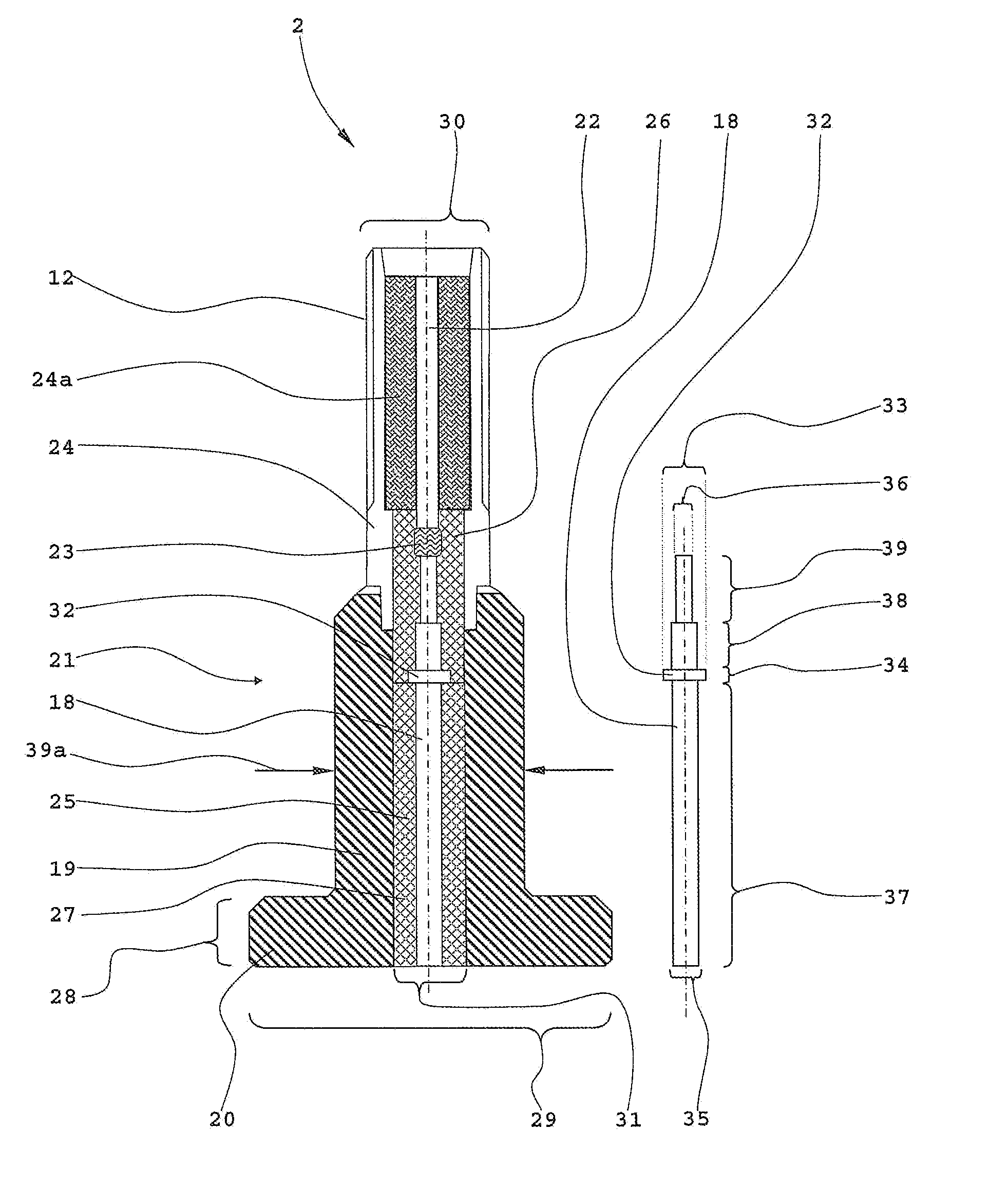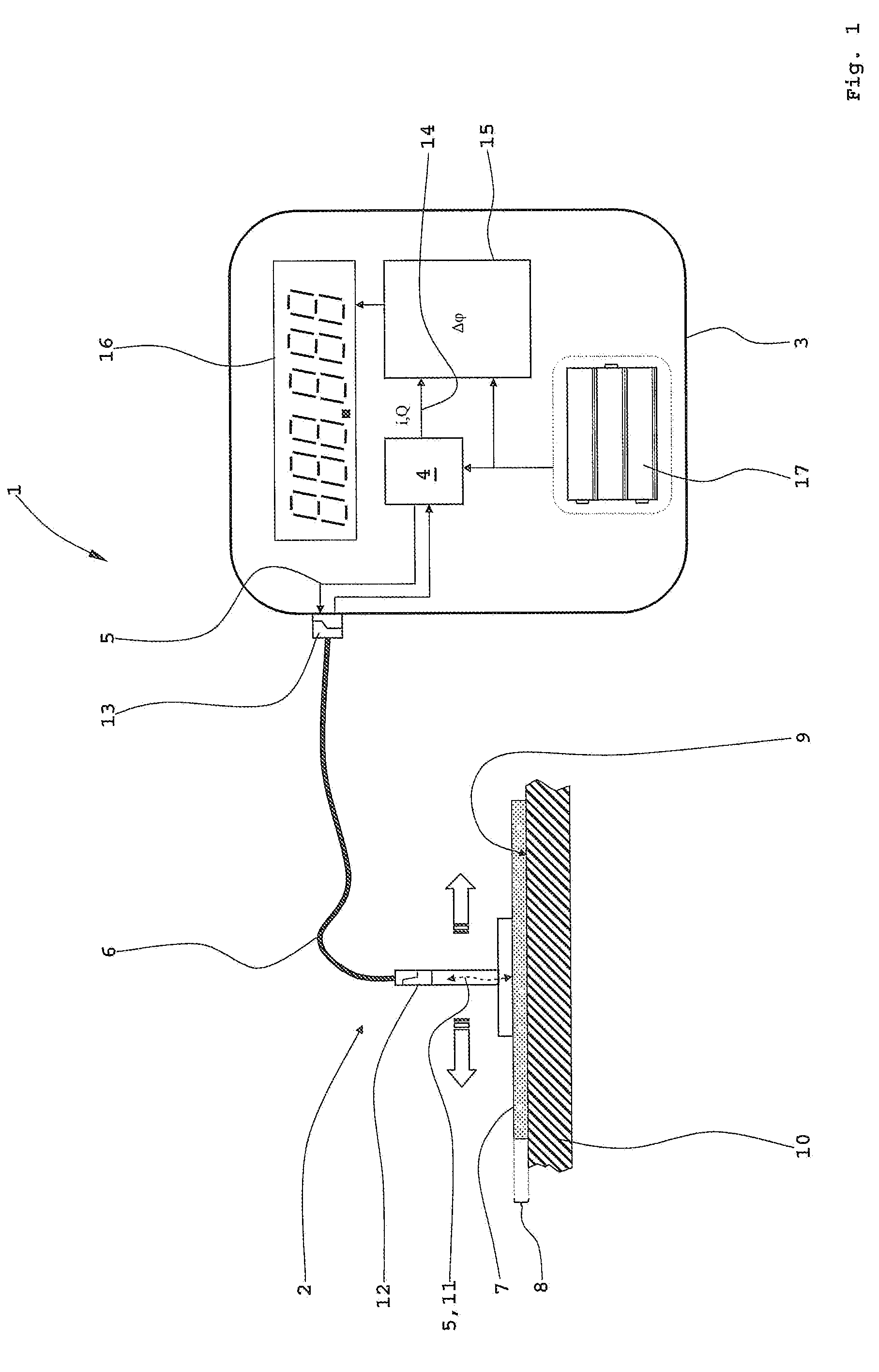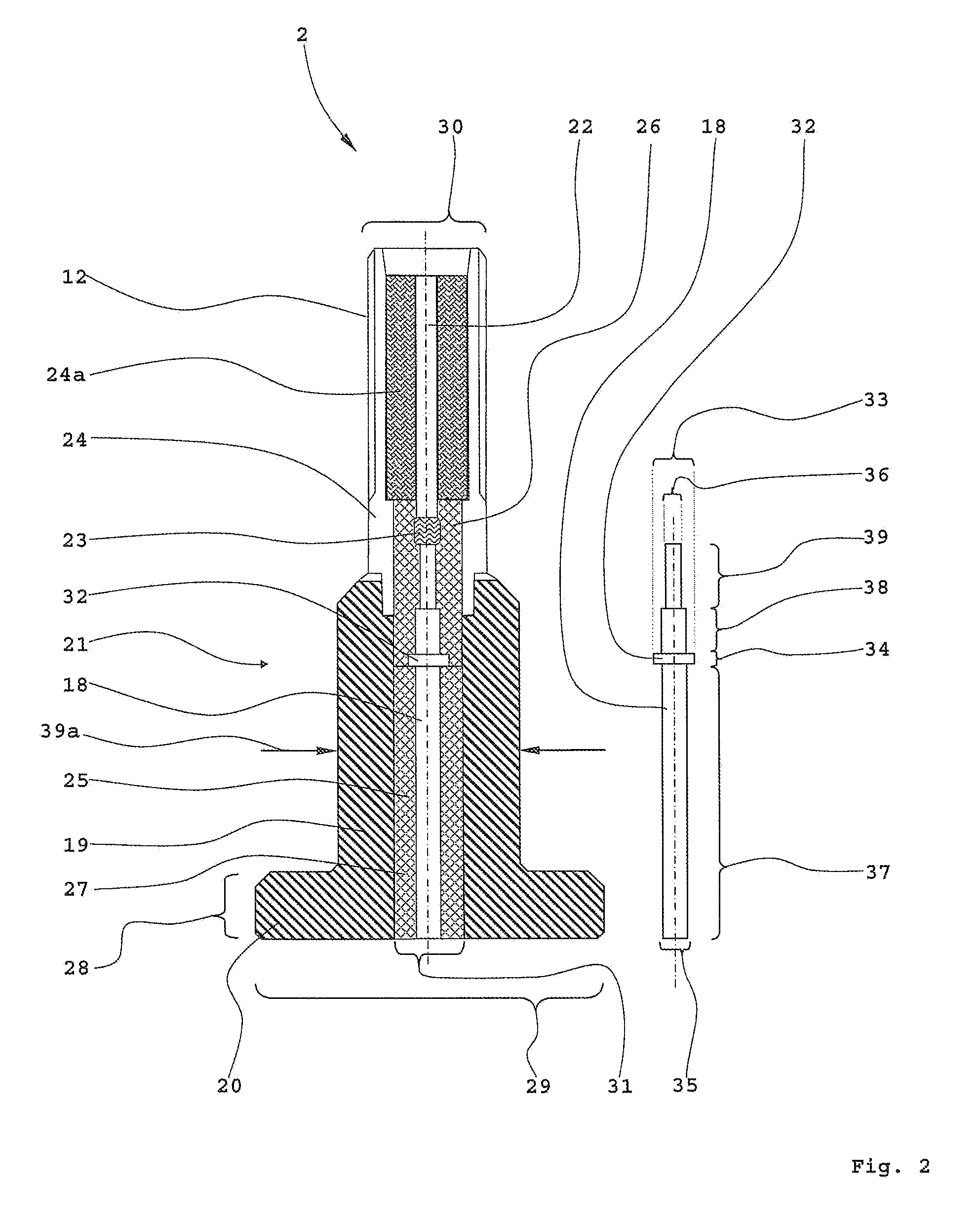Device for the measurement of coating thicknesses by means of microwaves
a technology of coating thickness and measurement device, which is applied in the direction of measurement device, resistance/reactance/impedence, instruments, etc., can solve the problems of inherently limited measurement accuracy, inability to measure thickness units, and substrates with polymer coatings that must feature a really high electrical conductivity. , to achieve the effect of minimising the influence of materials
- Summary
- Abstract
- Description
- Claims
- Application Information
AI Technical Summary
Benefits of technology
Problems solved by technology
Method used
Image
Examples
Embodiment Construction
[0029]In the drawings the same structural elements have in each case the same reference numbers.
[0030]FIG. 1 illustrates a schematic representation of the device according to the invention for the measurement of coating thicknesses.
[0031]A device 1 comprises amongst other items a mobile probe 2 as well as a housing 3, whose spatial dimensions are selected such that it can preferably be held by a user in one hand. In the housing 3 is located, amongst other items, a combined transmitter / receiver module 4 for microwave radiation. The microwave radiation 5 emitted from the transmitter / receiver module 4 is fed via a coaxial cable 6 to the probe 2. There the emitted microwave radiation 5 penetrates a polymer coating 7, whose material thickness or coating thickness 8 is to be determined, is reflected back in the region of a surface 9 of a substrate, and finally returns as reflected microwave radiation 11 to the combined transmitter / receiver module 4. The highly flexible coaxial cable 6 is ...
PUM
 Login to View More
Login to View More Abstract
Description
Claims
Application Information
 Login to View More
Login to View More - R&D
- Intellectual Property
- Life Sciences
- Materials
- Tech Scout
- Unparalleled Data Quality
- Higher Quality Content
- 60% Fewer Hallucinations
Browse by: Latest US Patents, China's latest patents, Technical Efficacy Thesaurus, Application Domain, Technology Topic, Popular Technical Reports.
© 2025 PatSnap. All rights reserved.Legal|Privacy policy|Modern Slavery Act Transparency Statement|Sitemap|About US| Contact US: help@patsnap.com



